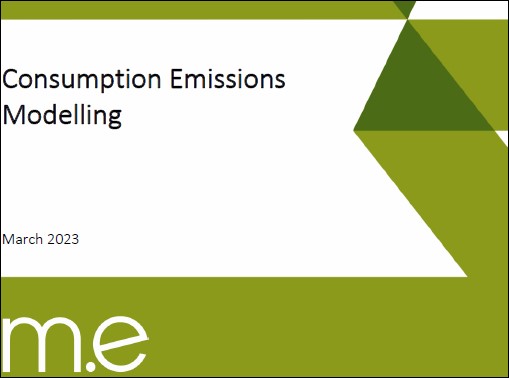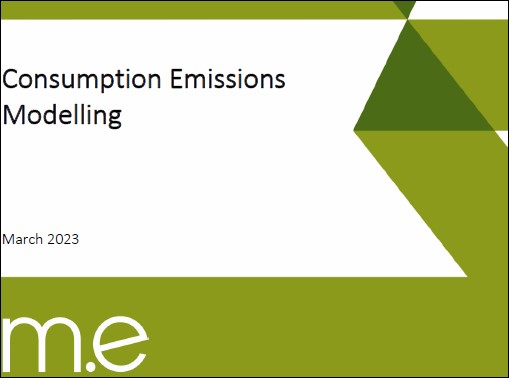Consumption emissions modelling
Author:
Garry McDonald, Nicola McDonald, Market Economics LimitedSource:
Market Economics Limited | Auckland Council Environmental ServicesPublication date:
2023Topics:
EnvironmentExecutive summary
National emissions reporting has to date focused primarily on production-based reporting by industry or per capita. Although useful, these approaches do not enable households to make a discerning assessment of their consumption patterns that potentially may mitigate/reduce Greenhouse Gas (GHG) emissions. In this report, we show how consumption-based emissions can be determined from data readily available from StatsNZ.
Consumption based emissions accounting focuses on calculating the emissions ‘embodied’ in the goods and services people consume. In other words, all emissions released directly and indirectly throughout the industrial supply chain that generated each good or service. To analyse embodied emissions, emissions intensities (i.e. tonnes of carbon dioxide equivalents (CO2-e) per dollar of use) are generated for different commodity types. Using these intensities provides opportunities to study which components of household (or any other final consumer) expenditure offer the greatest opportunities for reduction. We also account for the emissions produced directly by consumers when using commodities e.g., when fuel is combusted in household vehicles.
To develop the emissions intensities, we rely primarily on StatsNZ’s 2020 Inter-industry Study of the New Zealand Economy1 and StatsNZ’s 2019 Production-based GHG Emissions Accounts2 for New Zealand. Using Supply-Use Tables, from the inter-industry study, we produce consumption emission intensities by 199 commodities which, in turn, can be linked to the Household Economic Survey; providing a direct link to commonly purchased household items. The approach here is based entirely on a top-down Input Output (IO) approach, rather than a bottom-up process-based Life Cycle Assessment (LCA) approach.
We have relied only on emissions data reported by StatsNZ, which was a pre-condition of the scope of this work. This means that we have used emission intensities calculated from domestic datasets only. In other words, it is assumed that goods and services purchased from outside of New Zealand generate the same quantities of emissions per dollar of expenditure as equivalent goods and services produced in New Zealand.
The emissions intensities and datasets generated by this project have other potential uses. This could include, for example, estimation of a carbon footprint for each Auckland Local Board and the breakdown of carbon footprints by household types covering demographic characteristics such as age, income, family type and ethnicity. The emission intensities may be applied, not only to identify interventions to reduce emissions attributed to household consumption, but also by businesses and government to identify emission reduction strategies, particularly around Scope 3 emissions. Furthermore, when matched with models that produce different economic future pathways, we can ask such questions as “how will different development trajectories and climate adaptation strategies impact on emission production?”
__________________________________________
1. This is for the financial year ending 31 March 2020, released 20 December 2021 (See Item 3 under Data sources).
2. These are for the calendar year ending 2019, released 8 July 2021 (See Item 1 under Data sources).
March 2023
Market Economics Limited report prepared for Auckland Council, Environmental Services.
*****
See also

